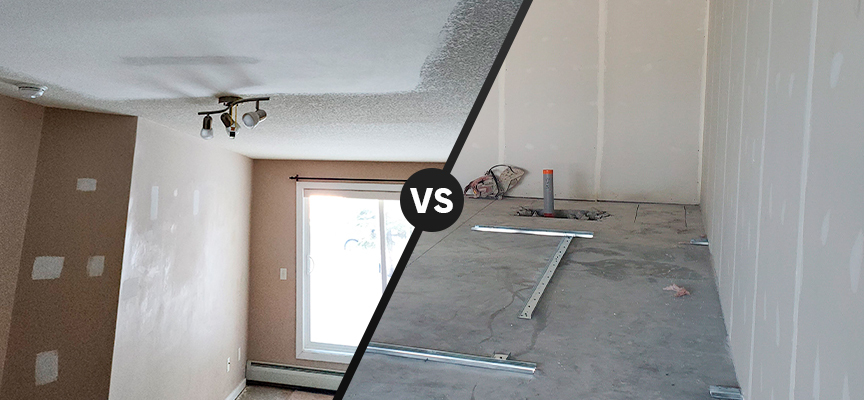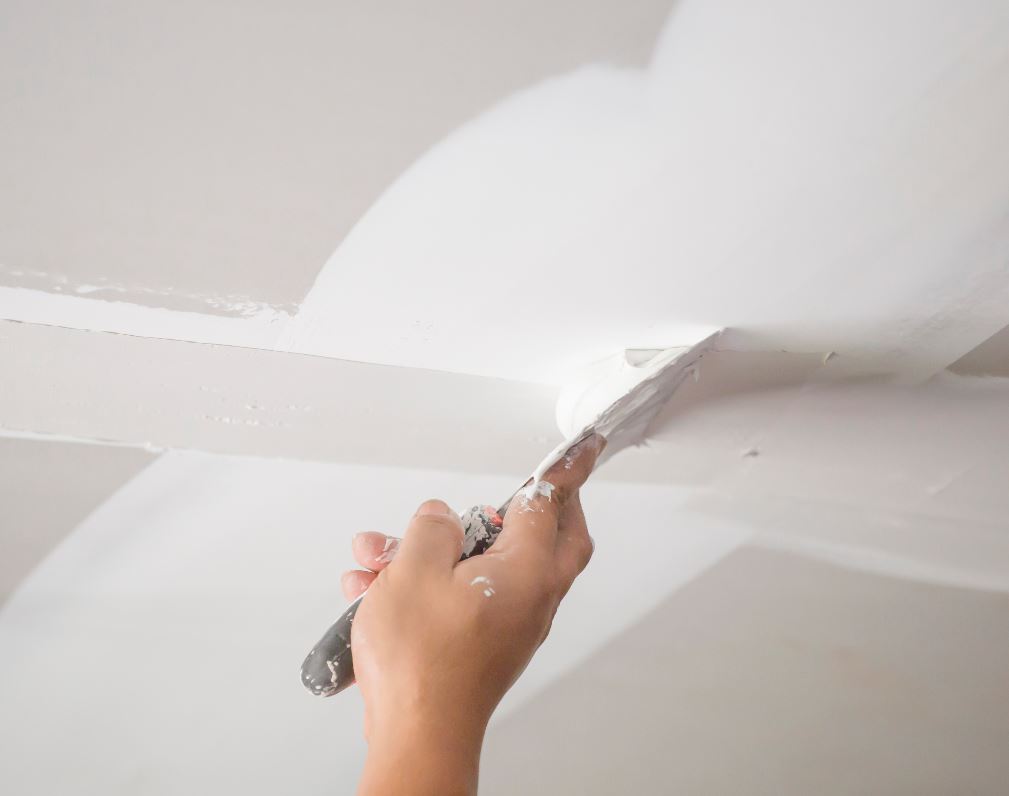Improve your home’s value with all-in-one Drywall Repair Ogden UT and painting services.
Step-by-Step Approaches to Getting Flawless Drywall Fixing and Installment
Accomplishing perfect drywall fixing and installment requires a systematic method. It includes comprehending the different kinds of drywall and the devices essential for the job. Correct location prep work is essential prior to beginning any kind of work. Drywall Installation Ogden Utah. Each step, from covering openings to mounting brand-new sheets, needs interest to detail. The procedure does not end with installation; finishing techniques are critical for a polished appearance. The following actions will guarantee a seamless result, yet just what do they require?
Recognizing Drywall Types and Equipment Needed

The installation tools are similarly vital. An utility knife is crucial for reducing drywall sheets, while a drywall saw can help in making precise cuts for fixtures or outlets. T-squares ensure precise dimensions, and drywall screws or nails protect the panels to wall surface studs. In addition, a drywall lift can facilitate the setup of big sheets, lessening physical pressure. Familiarity with these devices and types substantially adds to the performance and top quality of drywall tasks.
Preparing the Location for Repair or Installation
Preparing the area for drywall repair work or installation is important to ensure a smooth and effective process. The surrounding room must be removed of furniture and other obstacles to give enough functioning area. This not only ensures safety but additionally protects against damages to belongings. Next off, it is crucial to cover the flooring with ground cloth to catch any particles or dirt generated throughout the work.
In addition, the walls ought to be evaluated for any type of loose paint or wallpaper that might hinder adhesion. Getting rid of these elements develops a clean surface area for the new drywall. Before start, it is recommended to shut off power to electric outlets or components around. Making certain sufficient lighting in the workspace will certainly even more enhance visibility and emphasis throughout the repair work or installation process. Interior Painting. By meticulously preparing the area, one prepares for a successful drywall task
Step-by-Step Process for Patching Holes

Patching holes in drywall requires an organized technique to ensure a smooth fixing. The very first step involves examining the dimension of the opening. For little holes, a patching compound may be adequate, while larger openings demand a spot. Next off, the broken location must be cleansed and prepared by getting rid of any kind of loosened particles.
For tiny holes, using spackling compound with a putty knife is suggested, smoothing it over the hole and feathering the edges. Once dry, sanding the location assures a smooth coating. For bigger openings, a drywall patch need to be reduced to dimension, placed over the opening, and protected with screws. After setting up the patch, the same spackling procedure is duplicated, adhered to by fining sand.
The patched area has to be topped and repainted to match the surrounding wall. This careful process assures an expert appearance and prolongs the lifespan of the fixing.
Setting Up New Drywall Sheets: A Comprehensive Overview
Installing brand-new drywall sheets requires cautious preparation and execution to guarantee a tough and visually enticing surface. The area needs to be measured accurately to establish the number of sheets required. It is important to pick the ideal thickness, generally 1/2-inch for indoor walls and 5/8-inch for ceilings or fire-rated applications.
Next, the studs or framework need to be examined for any type of abnormalities, making sure they are straightened and properly spaced. When putting the drywall sheets, they need to be positioned horizontally to lessen joints and improve structural stability. A drywall lift can be advantageous for above installations.
Securing the sheets with drywall screws at proper periods makes certain a protected installment. It's vital to countersink the screws somewhat listed below the surface area to plan for the finishing process. Complying with these guidelines will certainly bring about a strong foundation, ready for the next action in drywall completing.
Finishing Touches: Taping, Mudding, and Sanding Techniques
Once the drywall sheets are firmly attached, the focus shifts to the complements that will certainly offer a polished look. This procedure begins with taping, utilizing either paper or fiberglass harmonize tape to cover the seams in between sheets. The tape guarantees a smooth shift, decreasing the risk of fracturing. Complying with taping, mudding is essential; a joint compound is used over the tape to fill up gaps and develop a smooth surface. Usually, numerous layers are needed, each one feathered out even more than the previous to minimize visibility.
After enough drying time, sanding is the final action in accomplishing a remarkable surface. A fine-grit sandpaper is made use of to smooth the dried substance, guaranteeing there are no imperfections or bumps. Focus to detail throughout this phase is considerable, as it significantly affects the overall appearance of the wall surface. The end result should be an also, professional-looking surface area all set for priming and painting.
Regularly Asked Concerns
Just how Do I Choose the Right Drywall Thickness for My Task?
To pick the right drywall density, think about the project's objective, place, and structural needs. Requirement thicknesses consist of 1/2-inch for read more general usage and 5/8-inch for fire-rated applications, guaranteeing sturdiness and compliance with building regulations.

Can I Mount Drywall Over Existing Drywall?
Yes, installing drywall over existing drywall is possible. Nonetheless, it is vital to guarantee the underlying surface area is totally free and safe from damages. Proper fastening and consideration of thickness are critical for a successful installation.
What Are the very best Practices for Drywall Disposal?
The very best practices for drywall disposal include recycling when possible, utilizing local waste management services, and complying with standards for harmful products if suitable. drywall contractors. Properly securing and labeling waste warranties compliance and safety and security throughout disposal
The length of time Should I Wait On Mud to Dry Before Fining sand?
Typically, one need to wait 1 day for drywall mud to dry before sanding. Nevertheless, drying time can vary based on moisture and temperature level, so inspecting for a firm texture is suggested prior to proceeding.
Are There Eco-Friendly Drywall Options Available?
Yes, green drywall options are offered. These choices frequently use recycled products, low-VOC adhesives, and lasting manufacturing methods, decreasing environmental effect while offering efficient insulation and durability for various construction and restoration tasks.
An utility blade is important for reducing drywall sheets, while a drywall saw can assist in making specific cuts for fixtures or electrical outlets. Preparing the area for drywall fixing or setup is important to guarantee a reliable and smooth procedure. Patching openings in drywall needs a systematic strategy to ensure a smooth repair work. Mounting new drywall sheets needs careful preparation and implementation to ensure a strong and aesthetically attractive coating. Yes, mounting drywall over existing drywall is feasible.